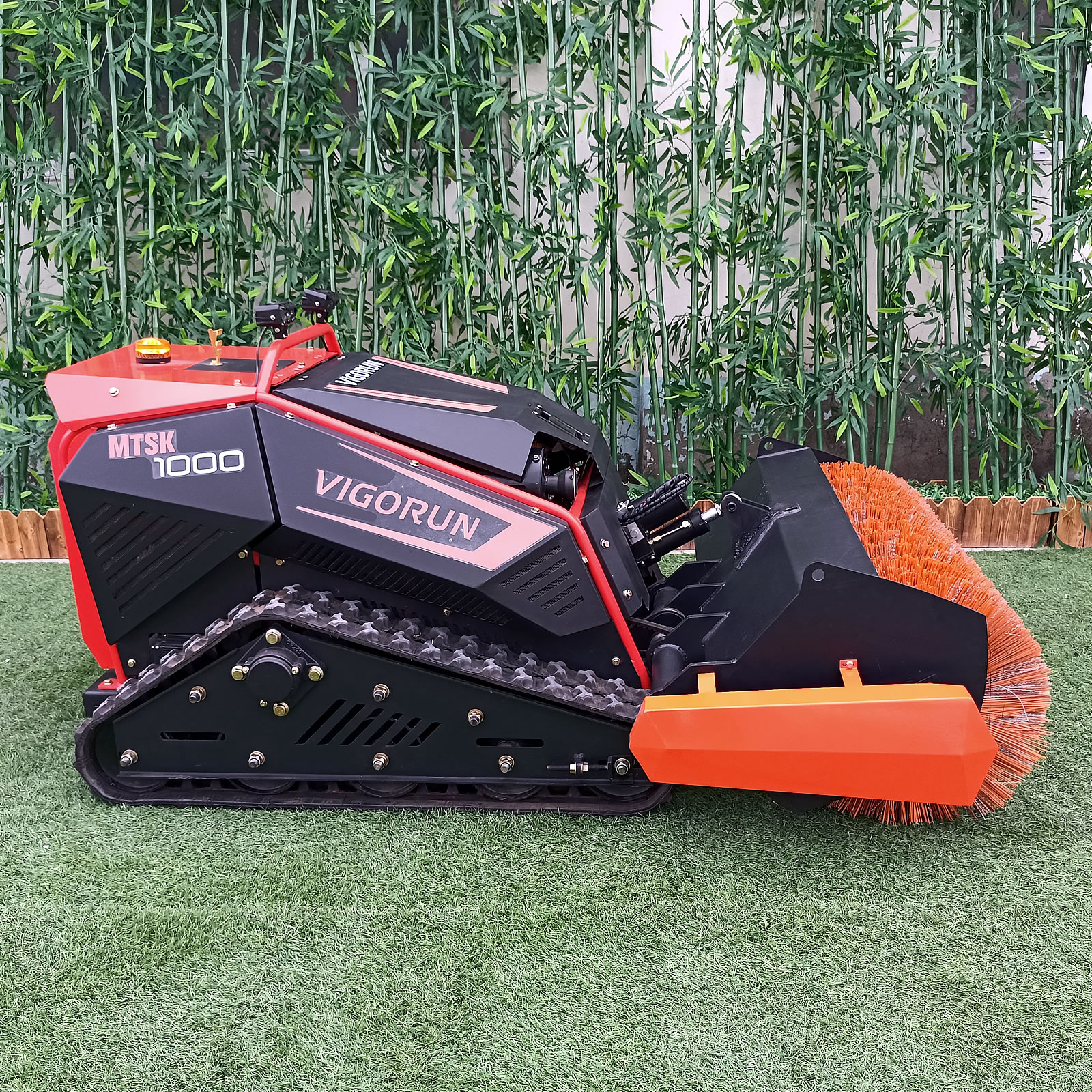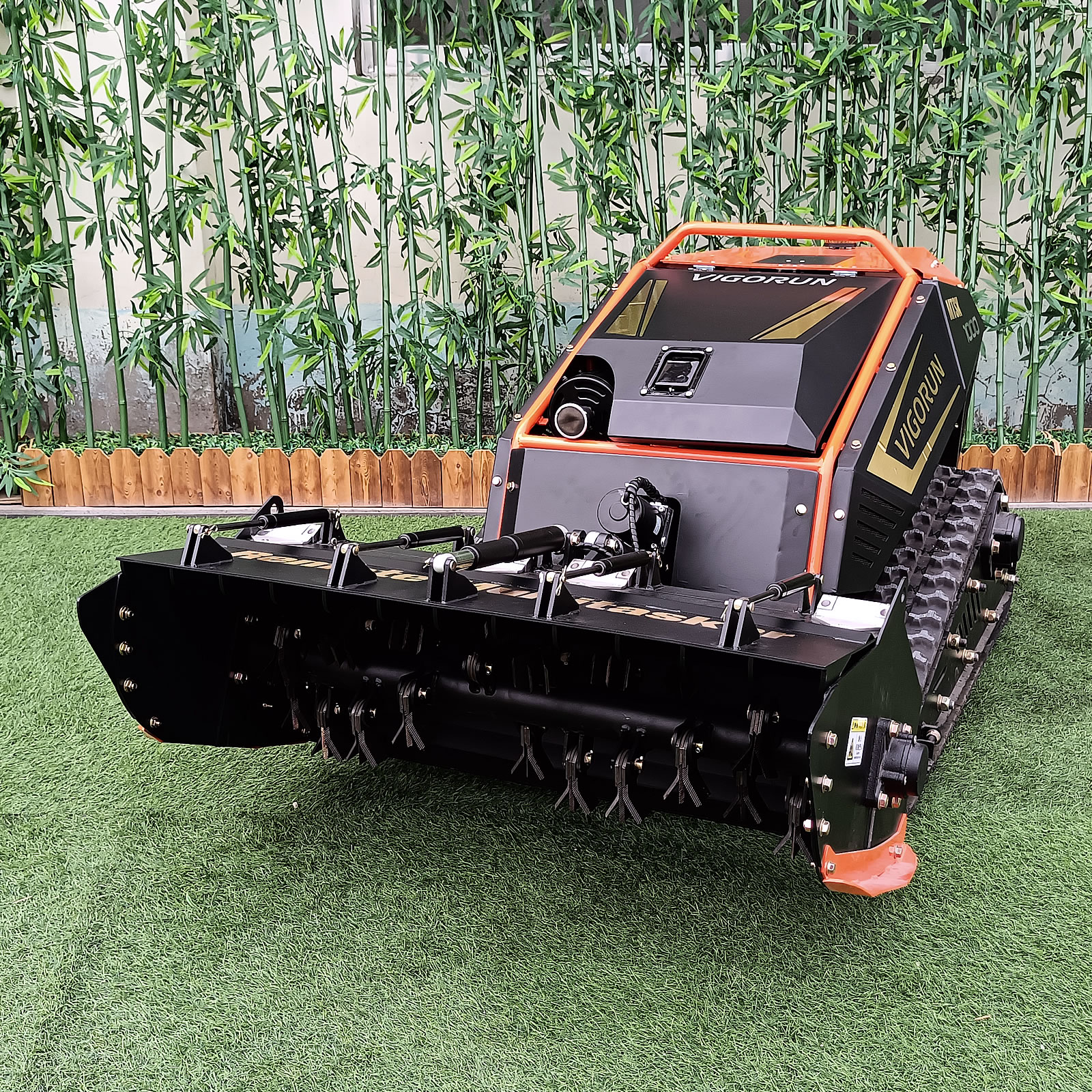crawler wireless radio control slasher mower China manufacturer factory
Innovative Features of Crawler Wireless Radio Control Slasher Mower

The crawler wireless radio control slasher mower is powered by a robust V-type twin-cylinder gasoline engine, specifically the Loncin brand model LC2V80FD. This engine delivers a rated power of 18 kW at 3600 rpm, offering exceptional performance for various mowing tasks. With its 764cc capacity, this engine ensures that the mower operates efficiently, making it an ideal choice for heavy-duty applications.
Designed with safety and performance in mind, the engine features a clutch that engages only when reaching a predetermined rotation speed. This mechanism enhances control and prevents unnecessary wear on the engine while ensuring optimal performance during operation. The powerful output allows the mower to tackle tough terrains with ease.
In addition to the gasoline engine, the mower is equipped with dual 48V 1500W servo motors that provide impressive climbing ability and strong performance. The built-in self-locking function guarantees that the machine remains stationary without throttle input, significantly improving operational safety and preventing unintended sliding on slopes.


Versatile Applications of Crawler Wireless Radio Control Slasher Mower
The crawler wireless radio control slasher mower is designed for multi-functional use, featuring interchangeable front attachments that enhance its versatility. It can be outfitted with a variety of tools such as a 1000mm-wide flail mower, hammer flail, or forest mulcher, making it suitable for diverse tasks including heavy grass cutting, shrub clearing, vegetation management, and even snow removal.
Equipped with electric hydraulic push rods, the mower allows for remote height adjustment of attachments, adding convenience and flexibility to its operation. This functionality enables users to adapt quickly to different mowing conditions, ensuring optimal results regardless of the environment.


The intelligent servo controller plays a crucial role in regulating motor speed and synchronizing the left and right tracks, allowing the mower to maintain a straight path without constant adjustments. This not only reduces operator workload but also minimizes risks associated with overcorrection on steep slopes, making it an efficient choice for challenging terrains.
